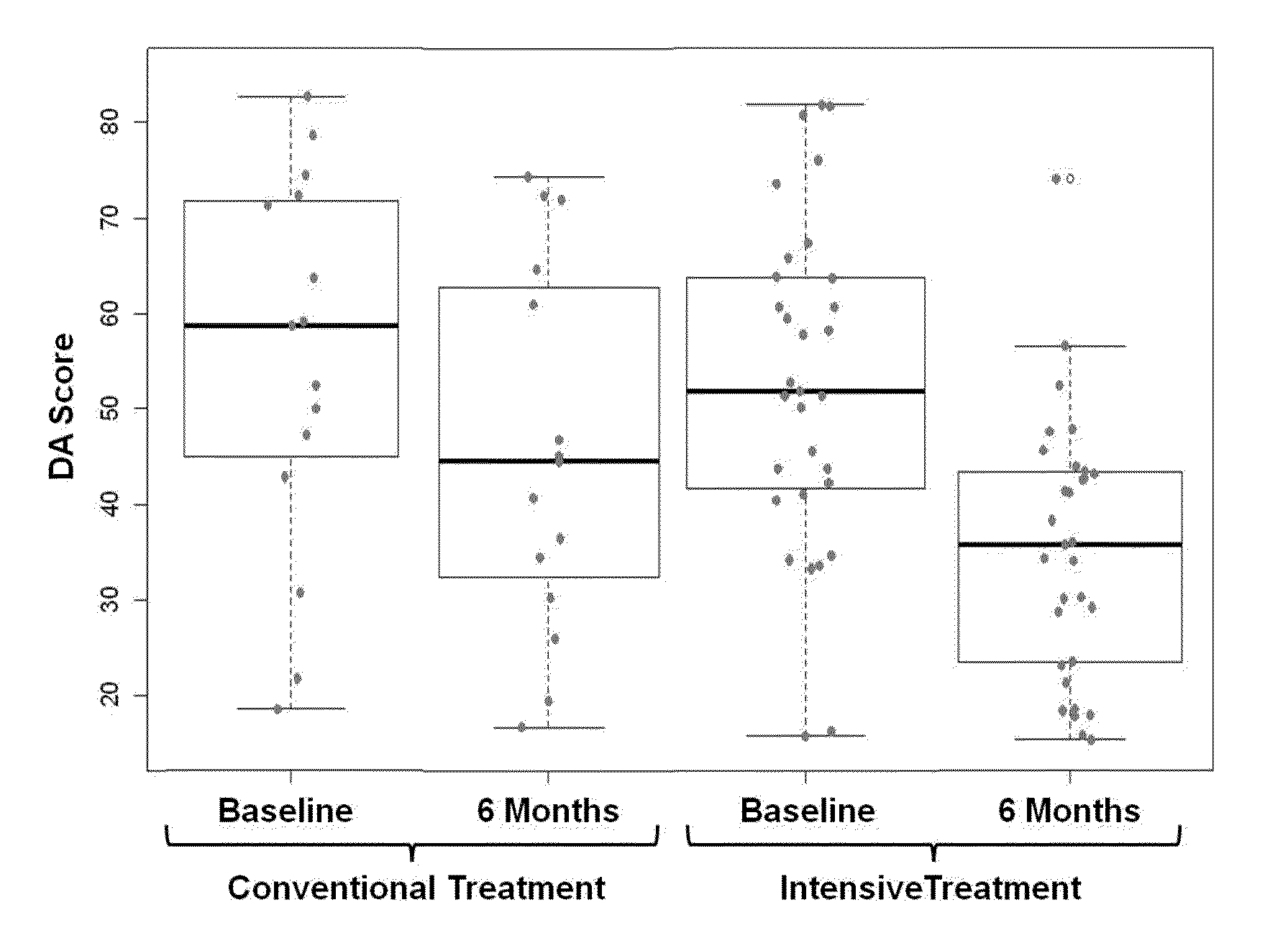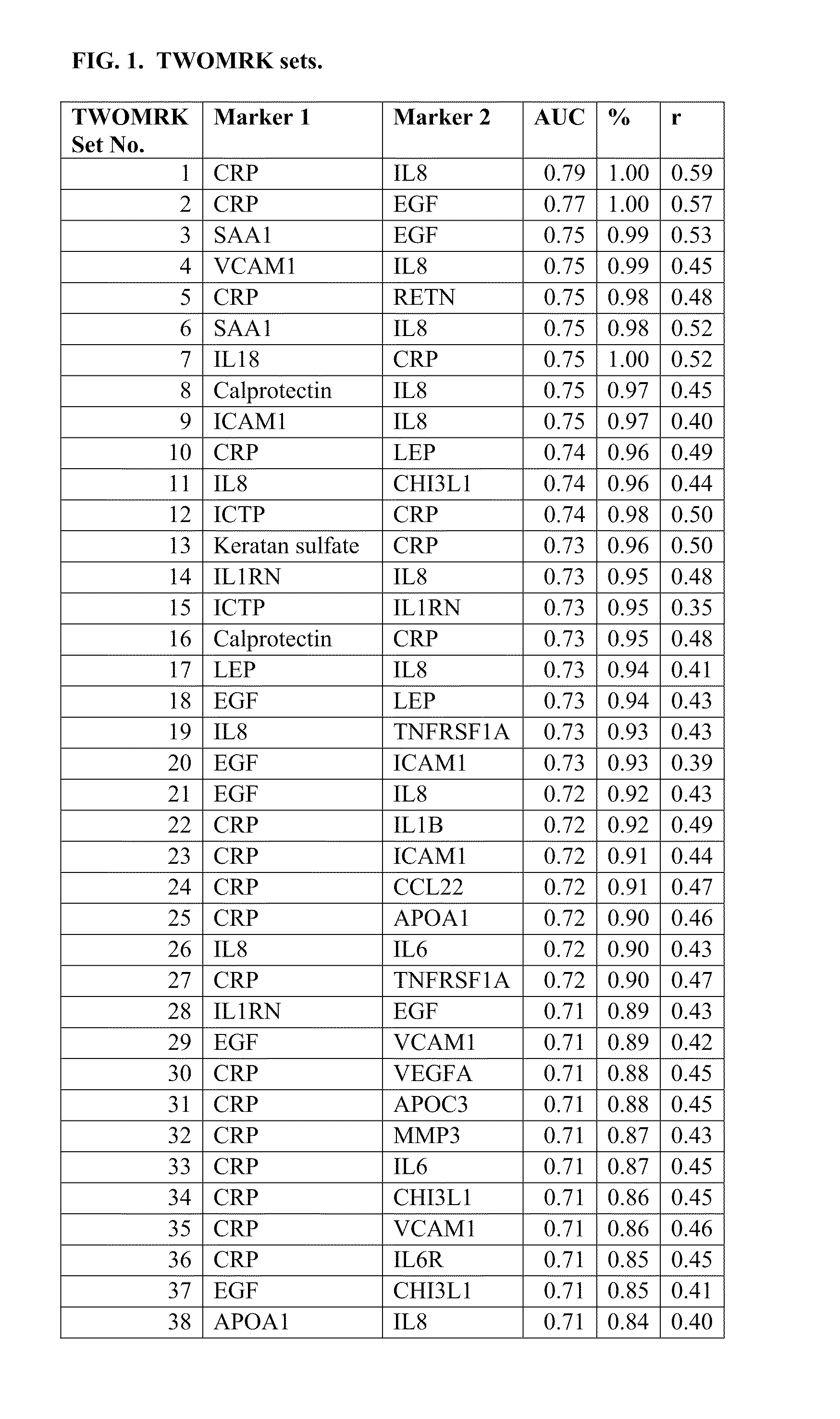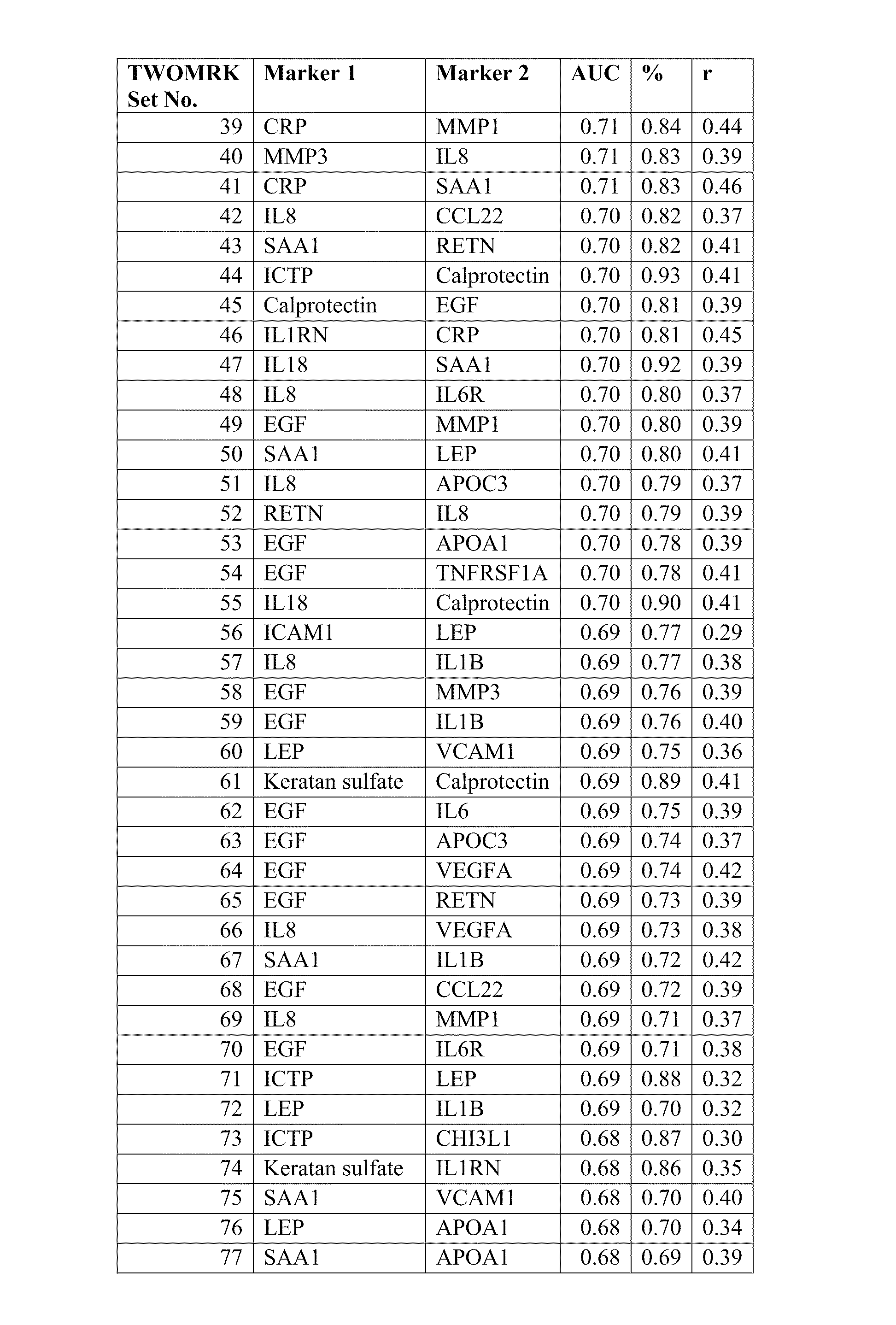Biomarkers and methods for measuring and monitoring inflammatory disease activity
a biomarker and inflammatory disease technology, applied in the field of bioinformatics and inflammatory and autoimmune diseases, can solve the problems of cumulative disability, inflammation of joints (arthritis), widespread endothelial inflammation, and even destruction of joint tissu
- Summary
- Abstract
- Description
- Claims
- Application Information
AI Technical Summary
Benefits of technology
Problems solved by technology
Method used
Image
Examples
example 1
[0217]Association of DAI with DAS28 Scores in a Large Clinical Cohort
[0218]Example 1 demonstrates the transformation of observed biomarker levels into a DAI score by various statistical modeling methodologies, which DAI score serves as a quantitative measurement of disease activity that correlates well with observed DAS28, as for measuring the extent of subject inflammation status and disease activity at any single timepoint. Certain embodiments of the present teachings comprise utilizing the DAIMRK set of biomarkers for determining a DAI score with high correlation with disease activity status.
[0219]Samples were obtained from the Brigham and Women's Hospital Rheumatoid Arthritis Sequential Study (BRASS). The appropriate Research Ethics Committee approval was obtained for the study, and all subjects gave informed consent. Since 2003, 1,000 subjects with confirmed RA under the care of the Brigham and Women's hospital have been enrolled in BRASS. The cohort for this study had the foll...
example 2
Correlation of DAI to DAS28 Scores Over Multiple Timepoints in a Longitudinal Cohort
[0245]Example 2 demonstrates the practice of the present teachings in a longitudinal study of RA, and the predictive power of DAI scores to track changes in a subject's DAS28 scores over time. The DAI score thus provides a quantitative measure to monitor changes in subject disease activity and response to treatment.
Experimental Design, Biomarker Selection and Quality Control of Assay Data
[0246]Analyzing data obtained from multiple time points for a subject is not only useful in monitoring changes in that subject's disease activity, but can also be useful in increasing the prediction accuracy of a DAI formula. The objective of this study was to develop, validate, and compare biomarker-based models (single time point and longitudinal) that measure disease activity in RA subjects over time, in order to demonstrate that the performance of the longitudinal model is better than cross-sectional.
[0247]For th...
example 3
Classification of Subjects by DAI Score
[0252]Example 3 demonstrates the use of a DAI score to classify subjects according to disease activity. The study was conducted with 182 samples from the BRASS cohort (see Example 1), and 140 samples from a cohort established by the Oklahoma Medical Research Foundation (the OMRF cohort). The appropriate Ethics Committee approval was obtained for the study, and all subjects gave informed consent. Since 2007, more than 800 subjects with confirmed RA have been enrolled in OMRF cohort. All subjects fulfilled the American College of Rheumatology criteria for RA. The cross-sectional study collected medical or clinical information from all subjects, comprising disease activity scores, radiological results, subject health status and other clinical assessments. Blood samples were collected during office visits. The subjects from the BRASS cohort for this study had the following characteristics: 86% female, 65% CCP positive, 70% RF positive, 5% smokers, ...
PUM
| Property | Measurement | Unit |
|---|---|---|
| adhesion | aaaaa | aaaaa |
| shrinkage | aaaaa | aaaaa |
| physical function | aaaaa | aaaaa |
Abstract
Description
Claims
Application Information
 Login to View More
Login to View More - R&D
- Intellectual Property
- Life Sciences
- Materials
- Tech Scout
- Unparalleled Data Quality
- Higher Quality Content
- 60% Fewer Hallucinations
Browse by: Latest US Patents, China's latest patents, Technical Efficacy Thesaurus, Application Domain, Technology Topic, Popular Technical Reports.
© 2025 PatSnap. All rights reserved.Legal|Privacy policy|Modern Slavery Act Transparency Statement|Sitemap|About US| Contact US: help@patsnap.com



